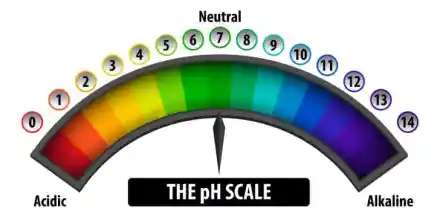How to Prevent Cannabis Deficiencies by Learning How to Check pH Levels
- Blog
- How to Prevent Cannabis Deficiencies by Learning How to Check pH Levels
lynette
Growing cannabis can be both rewarding and challenging, especially when it comes to ensuring your plants get the right nutrients. One of the key aspects of maintaining healthy cannabis plants is managing pH levels and preventing nutrient deficiencies.
In this article, we’ll explore how you can stop and prevent nutrient deficiencies in your plants by learning how to check pH levels.
pH is a measure of how acidic or alkaline a substance is, on a scale from 0 to 14. A pH of 7 is neutral, while numbers below 7 are acidic, and those above 7 are alkaline. For cannabis plants, the ideal pH range is slightly acidic. In soil, this is typically between 6.0 and 7.0, while in hydroponic systems, it’s between 5.5 and 6.5.
so, why is pH so important?
When the pH level is off, cannabis plants can’t absorb nutrients efficiently, even if those nutrients are present in the soil or water. This can lead to nutrient deficiencies, where the plant lacks essential elements needed for growth, resulting in poor health and reduced yields.

Checking pH levels is straightforward, and there are a few tools you can use which are as follows:
Regularly checking the pH of your water, nutrient solution, and soil is crucial. Aim to test at least once a week to ensure your plants are in the optimal pH range.
If you find that your pH levels are too high or too low, you can adjust them using pH up or pH down solutions, which are available at garden centers or online. Here’s how to use them:
To adjust pH, add a small amount of the pH up or pH down solution to your water or nutrient mix, stir well, and retest the pH. Repeat as needed until you reach the desired pH level.
Nutrient deficiencies can cause a variety of symptoms in cannabis plants, including yellowing leaves, brown spots, slow growth, and poor bud development.
Here are some common nutrient deficiencies and how to prevent them:
This is characterized by yellowing leaves starting from the bottom of the plant. Nitrogen is essential for leaf growth and overall plant health. To prevent this, use a balanced fertilizer that includes nitrogen, and ensure your pH levels are within the ideal range for nutrient uptake.
Symptoms include darkening and purpling of leaves, especially on the undersides, and slow growth. Phosphorus is crucial for root development and flowering.
Prevent deficiencies by using a fertilizer that includes phosphorus, especially during the flowering stage, and maintaining proper pH levels.
This can cause brown spots, yellow edges, and curling leaves. Potassium is important for overall plant health and bud development. Use a potassium-rich fertilizer and check your pH regularly to ensure potassium is available to your plants.
Look for symptoms like brown spots, weak stems, and slow growth. Calcium is vital for cell wall structure and stability. Prevent deficiencies by using a calcium supplement and ensuring your pH is in the correct range.
This causes yellowing between the veins of leaves and can affect overall plant health. Magnesium is necessary for chlorophyll production and energy transfer. Use a magnesium supplement, such as Epsom salts, and maintain proper pH levels.
Maintaining the right pH levels and preventing nutrient deficiencies are critical for healthy cannabis plants. By regularly checking and adjusting pH, using balanced fertilizers, and monitoring your plants for signs of deficiencies, you can ensure your plants thrive and produce abundant yields.
With a bit of attention and care, you’ll be well on your way to successful cannabis cultivation.
© Copyright 2025 Cultivating Homegrown Organic Marijuana